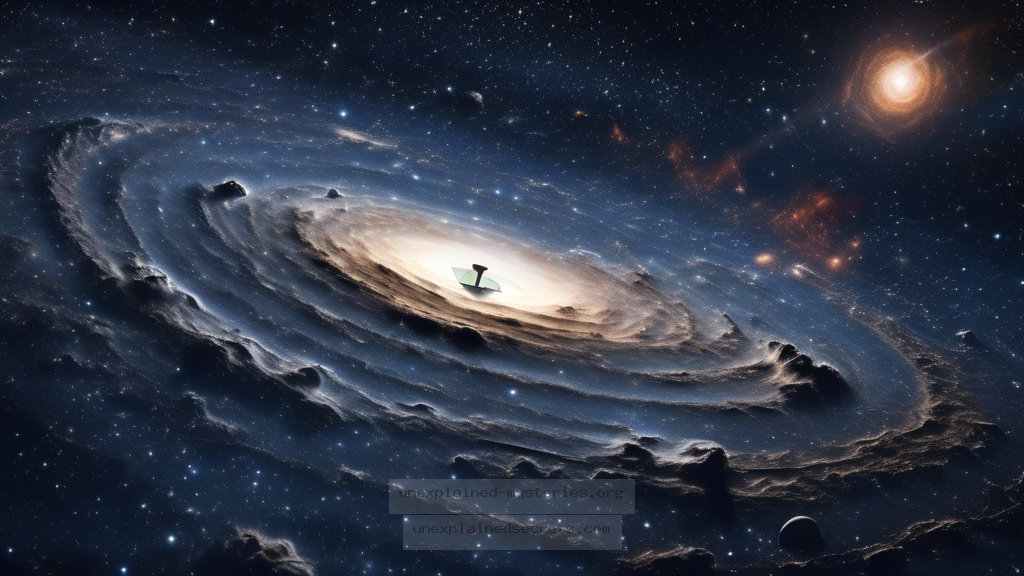What Causes the Mysterious Radio Emissions from Space That Defy Current Scientific Understanding?
What Causes the Mysterious Radio Emissions from Space That Defy Current Scientific Understanding?
The universe is filled with wonders that continue to baffle scientists and astronomers alike. One of the most enigmatic phenomena in recent years has been the mysterious radio emissions detected from deep space, often referred to as Fast Radio Bursts (FRBs). These brief, intense bursts of radio waves seem to originate from distant galaxies, yet their origins and mechanisms remain largely unexplained. Understanding these emissions is crucial not only for astrophysics but also for our broader comprehension of the cosmos. In this blog post, we will delve into the intricacies of these mysterious signals, exploring their historical context, scientific implications, and the ongoing research aimed at unraveling their secrets.
Historical Context of Fast Radio Bursts
The first confirmed detection of a Fast Radio Burst occurred in 2007 when astronomers observed a single burst from a distant galaxy. Initially thought to be a one-off event, the discovery sparked a wave of interest and subsequent investigations. Since that time, hundreds of FRBs have been identified, with some repeating and others appearing to be one-time events. Historical accounts reveal that these bursts are not just contemporary anomalies; they have been a part of the cosmic story, hinting at phenomena we have yet to comprehend.
The term “Fast Radio Burst” itself was coined after the initial discovery, and it was quickly recognized that these emissions were unlike any other astronomical signals previously recorded. The rapid nature of the bursts (lasting mere milliseconds) and their extraordinary energy output—often exceeding that of our sun over an entire day—led scientists to propose various theories about their potential origins. Some hypotheses suggested extraterrestrial technology, while others pointed to more natural cosmic events.
Core Concepts: What Are Fast Radio Bursts?
Fast Radio Bursts are incredibly brief bursts of radio frequency emissions lasting typically from one to a few milliseconds. They are characterized by their high luminosity and have been detected at frequencies ranging from 400 MHz to several GHz. Their study is pivotal because they offer a new window into understanding the universe’s structure and the behavior of matter under extreme conditions.
Key Characteristics of FRBs:
- Duration: Milliseconds
- Frequency: 400 MHz to several GHz
- Energy Output: Comparable to the output of the sun over days
- Distance: Often from billions of light-years away
One of the most significant challenges in studying FRBs is their transient nature; they can occur randomly, making them difficult to observe and analyze. However, advancements in radio telescope technology have led to the identification of over 100 FRBs, with some detected multiple times, leading to the classification of repeating sources.
Theories Behind FRBs: Cosmic Origins or Extraterrestrial Signals?
Various theories have emerged regarding the origins of FRBs. Some of the most prominent include:
- Neutron Stars: One leading hypothesis suggests that FRBs could be emitted by magnetars, a type of neutron star with an extremely strong magnetic field. The energy released during starquakes could produce the radio bursts.
- Black Hole Activity: Another theory posits that the emissions could arise from interactions between black holes and surrounding matter, particularly during accretion events.
- Extraterrestrial Civilizations: Though less scientifically favored, some speculate that these emissions could be signals from advanced extraterrestrial civilizations. This idea captivates the imagination but lacks empirical support.
Each of these theories presents compelling possibilities but also raises questions about the nature of cosmic events and how they can create such powerful emissions. The ongoing research aims to clarify these theories and determine the definitive origins of FRBs.
Practical Implications of Understanding FRBs
The investigation of FRBs has significant implications for various fields of science, including astrophysics, cosmology, and even the search for extraterrestrial intelligence (SETI). Understanding these emissions can provide insights into the conditions present in distant galaxies and the fundamental physics at play in the universe.
For instance, studying the dispersion of the radio waves can reveal information about the interstellar medium and the distribution of matter in the universe. This could help refine our models of cosmic evolution and the large-scale structure of the universe. Additionally, FRBs could potentially serve as cosmic beacons, aiding in the mapping of dark matter and dark energy.
Why Studying FRBs Matters:
- Insights into the universe’s structure and matter distribution
- Refinement of astrophysical models
- Potential for discovering new cosmic phenomena
Alternative Perspectives: Skepticism and Challenges
While the excitement surrounding FRBs continues to grow, there are skeptics within the scientific community. Some argue that more evidence is needed to support the various theories about their origins. The transient nature of FRBs poses challenges for researchers, as only a fraction of bursts can be captured and studied in detail.
Additionally, the possibility of terrestrial interference complicates the analysis. Researchers must differentiate between genuine astronomical signals and those caused by human-made radio frequency interference. This necessitates the use of sophisticated filtering techniques and a careful approach to data collection.
Common Misconceptions About Fast Radio Bursts
As with any groundbreaking scientific discovery, misconceptions abound regarding FRBs. Here are some common misunderstandings and clarifications:
- FRBs Are Just Noise: Some may dismiss FRBs as mere noise in the universe. However, the energy and patterns observed in these bursts indicate they are significant astronomical events.
- All FRBs Are the Same: There is a misconception that all FRBs share the same characteristics. In reality, they vary significantly in terms of energy, duration, and frequency.
- FRBs Are Signals from Aliens: While the idea is intriguing, there is currently no empirical evidence supporting the notion that FRBs are communications from extraterrestrial civilizations.
Clarifications:
- FRBs are significant astronomical events, not just noise.
- There are various types of FRBs with different characteristics.
- Current theories do not support the idea of FRBs as alien signals.
Best Practices for Investigating Fast Radio Bursts
For researchers interested in studying FRBs, several best practices can enhance the investigation process:
- Use Advanced Technology: Employing state-of-the-art radio telescopes equipped with high sensitivity and wide bandwidth capabilities is essential for detecting and analyzing FRBs.
- Collaboration: Working collaboratively across institutions and countries can facilitate data sharing and foster innovative approaches to analyzing FRBs.
- Continuous Monitoring: Establishing continuous monitoring programs can increase the chances of capturing FRBs as they occur, providing valuable data for analysis.
By adhering to these practices, researchers can maximize their potential to uncover the mysteries surrounding FRBs and contribute to our understanding of the universe.
Future Developments and Ongoing Research
The field of FRB research is rapidly evolving, with new discoveries and techniques emerging regularly. Upcoming telescopes, such as the Square Kilometre Array (SKA), promise to revolutionize our ability to detect and analyze these enigmatic bursts by providing unprecedented sensitivity and resolution.
Ongoing research is focused on several key areas, including:
- Understanding Repeating FRBs: Investigating the mechanisms behind repeating FRBs could provide insights into their origins and the environments in which they occur.
- Mapping the Universe: Using FRBs as probes to map cosmic structures and the distribution of dark matter could yield groundbreaking findings.
- Exploring Alternative Theories: Researchers are encouraged to explore unconventional theories that could explain FRBs, pushing the boundaries of current scientific understanding.
Conclusion: The Enigma of Fast Radio Bursts Continues
Fast Radio Bursts represent one of the most intriguing mysteries in modern astrophysics. As scientists continue to uncover the nature of these enigmatic signals, we edge closer to understanding the fundamental workings of the universe. The historical context, core concepts, and ongoing research into FRBs highlight their significance and the potential insights they offer into cosmic phenomena.
While theories abound, the search for the true origins of these radio emissions is ongoing, with each discovery paving the way for new questions and possibilities. As we look to the future, the quest to unravel the mystery of Fast Radio Bursts remains an exciting frontier in the field of science, inviting curiosity, collaboration, and innovation.
Other Articles
What Secrets Lie Behind the Mysterious Death of Elisa Lam?
What Secrets Lie Beneath the Great Sphinx of Giza?
Recent Posts
- What Happened to Flight MH370? The Conspiracy Theories That Still Haunt Us
- What Secrets Lurk Within the Walls of the Infamous Trans-Allegheny Lunatic Asylum?
- What Evidence Supports the Existence of Bigfoot in the Pacific Northwest?
- What Happened to the Indus Valley Civilization? Unraveling the Mysteries of Ancient Urban Life
- Can Telepathy Be Scientifically Proven Through Laboratory Evidence?







